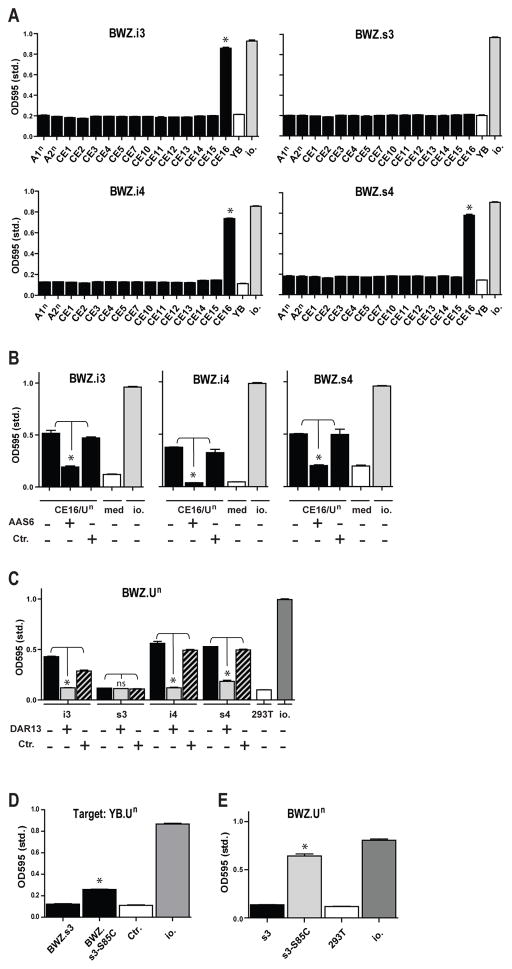FIGURE 3.
RT1-Un (RT1-CE16) is a ligand for the Ly49s4/-i4/-s3/-i3 group of receptors. (A) Ly49s4/-i4/-s3/-i3 reporter cells were co-incubated with YB2/0 stimulator cells stably transfected with different MHC class Ia (A1n, A2n) or class Ib (CE1–CE16) molecules from the n haplotype. As negative and positive controls are shown stimulation with YB2/0 wild-type cells (YB) and Ionomycin (io.), respectively. (B) Blocking of the specific response induced by the RT1-CE16/Un transfectant by addition of 1 μg of mAb AAS6 (anti-CE16/RT1-U). As isotype control (Ctr.) was added purified mAb LOV8 (anti- CDw93). (C) Testing of a reciprocal RT1-Un reporter cell against 293T stimulator cells stably transfected with Ly49i3,-s3,-i4 or-s4. The response could be blocked with mAb DAR13 binding these four Ly49 receptors. As isotype control (Ctr.) was used mAb FLY5. (D) Comparison of wild-type (BWZ.s3) and point-mutated Ly49s3 reporter (Ser85Cys in the stem region; BWZ.s3-S85C) against YB2/0.RT1-Un (YB.Un) stimulator cells. (E) Comparison of a reciprocal RT1-Un reporter cell against 293T stimulator cells transfected with wild-type Ly49s3 (s3) and the point-mutated variant (Ser85Cys in the stem region; s3-S85C). Data are representative of at least 3 independent experiments, *p<0.01.

